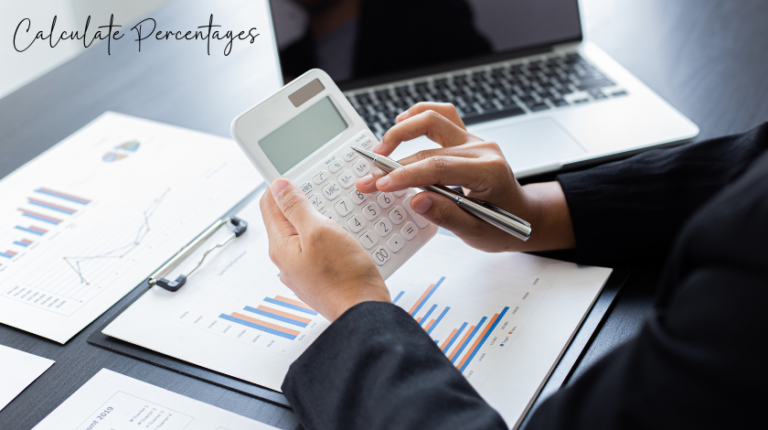Understanding percentages is an essential skill in everyday life, from financial planning to academic purposes. In this detailed guide, we will explore how to calculate what percent 17.55 is of 233.55 and provide step-by-step explanations, practical examples, and related insights.
Understanding the Basics of Percentage Calculation
A percentage is a way of expressing a number as a fraction of 100. To determine what percent one number is of another, the formula is:
Percentage=(PartWhole)×100\text{Percentage} = \left(\frac{\text{Part}}{\text{Whole}}\right) \times 100
Here, the part is the number we are analyzing (17.55), and the whole is the total or reference number (233.55).
Step-by-Step Calculation of 17.55 as a Percentage of 233.55
1. Apply the Formula
Using the formula above:
Percentage=(17.55233.55)×100\text{Percentage} = \left(\frac{17.55}{233.55}\right) \times 100
2. Perform the Division
Divide 17.55 by 233.55:
17.55÷233.55=0.07514 (rounded to five decimal places)17.55 \div 233.55 = 0.07514 \, (\text{rounded to five decimal places})
3. Multiply by 100
To convert this into a percentage:
0.07514×100=7.514%0.07514 \times 100 = 7.514\%
Thus, 17.55 is approximately 7.514% of 233.55.
Why is This Calculation Important?
Percentage calculations are used across various fields, including:
- Finance: Understanding discounts, interest rates, or budget allocations.
- Education: Analyzing test scores or performance metrics.
- Business: Measuring growth rates, market shares, or operational efficiencies.
By mastering these calculations, you can interpret data effectively and make informed decisions.
Common Scenarios Where This Formula Applies
1. Financial Planning
If you’re managing a budget of $233.55 and you’ve spent $17.55, calculating what percentage this represents helps track expenses efficiently.
2. Academic Grading
In an exam, if a student scores 17.55 marks out of 233.55, determining the percentage provides insight into performance.
3. Business Analytics
In a revenue model, if $17.55 represents a specific product’s contribution to total revenue of $233.55, calculating the percentage helps evaluate the product’s impact.
Tips for Accurate Percentage Calculations
- Use a Calculator: For large or complex numbers, a calculator ensures precision.
- Double-Check Your Work: Errors often arise from misplaced decimals.
- Round Appropriately: Depending on the context, decide the number of decimal places to round to. For financial or academic contexts, two decimal places are common.
Alternative Methods for Finding Percentages
1. Proportional Ratios
Set up a proportion to find the percentage:
17.55233.55=x100\frac{17.55}{233.55} = \frac{x}{100}
Solve for xx:
x=17.55×100233.55=7.514%x = \frac{17.55 \times 100}{233.55} = 7.514\%
2. Mental Math Approximation
For quick approximations:
- Recognize that 10% of 233.55 is 23.355.
- Since 17.55 is less than 10%, estimate the percentage closer to 7%.
3. Spreadsheet Tools
In software like Excel, use the formula:
=(17.55/233.55)∗100= (17.55 / 233.55) * 100
This method is useful for handling large datasets.
Common Mistakes in Percentage Calculations
- Misplacing Decimals: Always check decimal placement when multiplying or dividing.
- Incorrect Whole Reference: Ensure you’re dividing by the correct total (whole) number.
- Skipping Steps: Rushing through calculations can lead to errors; follow the steps systematically.
Practical Applications of Percentage Calculations
1. Retail Discounts
Imagine a product priced at $233.55, with a discount of $17.55. To find the discount percentage:
Discount Percentage=(Discount AmountOriginal Price)×100=7.514%\text{Discount Percentage} = \left(\frac{\text{Discount Amount}}{\text{Original Price}}\right) \times 100 = 7.514\%
2. Loan Repayment
In loans, understanding percentages helps determine interest rates and repayment amounts. For example, if $233.55 represents the total amount and $17.55 is the interest, calculating the percentage clarifies the cost of borrowing.
Advanced Percentage Topics
1. Percentage Change
To measure growth or decline, use:
Percentage Change=New Value – Original ValueOriginal Value×100\text{Percentage Change} = \frac{\text{New Value – Original Value}}{\text{Original Value}} \times 100
2. Compound Percentages
When percentages apply consecutively (e.g., discounts on taxes), use compounding methods to determine the cumulative effect.
Conclusion
Calculating percentages is a vital skill in analyzing data, managing finances, and making informed decisions. Through the example of 17.55 as a percentage of 233.55, we’ve demonstrated a simple yet effective approach to finding percentages with accuracy and context. Mastering this skill enables better problem-solving in both personal and professional settings.
